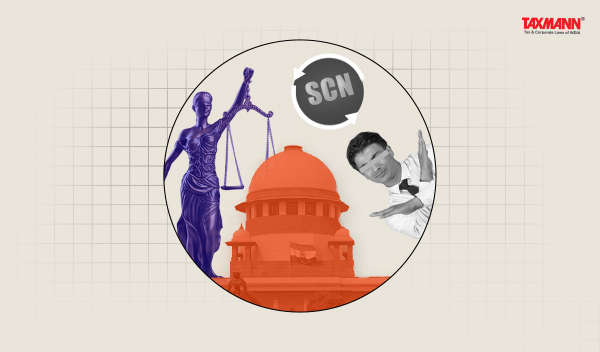SCN Was Not Illegal Where Proper Scrutiny Procedure u/s 61 Was Followed Including Issuance of Discrepancy Notice | HC
- Blog|News|GST & Customs|
- 2 Min Read
- By Taxmann
- |
- Last Updated on 4 September, 2024

Case Details: PepsiCo India Holdings (P.) Ltd. v. Union of India - [2024] 166 taxmann.com 10 (Patna)
Judiciary and Counsel Details
-
- K. Vinod Chandran, CJ. & Partha Sarthy, J.
- Rohan Shah, Ravi Bharuka, Joybrata Misra, Sanjeev Kumar, Manish Mishra, Shareen Gupta & Tanay Vyas, Advs. for the Petitioner.
- Dr. K.N. Singh, ASG, Anshuman Singh, Sr. SC. CGST & CX, Devansh Shankar Singh, Adv. for the Respondent.
Facts of the Case
The petitioner challenged a demand-cum-show-cause notice issued under Section 74 of the CGST Act, 2017. The petitioner argued that the proper scrutiny procedure under Section 61 of the GST Act was not followed, making the show-cause notice illegal. The petitioner contended that the unreconciled ITC in Column T of Table 14 had been auto-populated and that Table 14 was optional; therefore, it should not be considered a discrepancy.
High Court Held
The Court found that the proper procedure under Section 61, read with Rule 99, was followed in this case. A discrepancy notice, akin to Form GST ASMT-10, was issued to the taxpayer, and an explanation was sought. The assessee provided a reply, but the authorities found the explanation unsatisfactory, leading to the issuance of the show-cause notice under Section 74 of the CGST Act. The Court also stated that if the unreconciled ITC in Column T was auto-populated and noticed by the assessee, it was incumbent upon the assessee to offer an explanation for the same rather than argue that Table 14 was optional.
Therefore, the Court dismissed the writ petition, stating that the show-cause notice was not illegal. The proper procedure was followed, and the petitioner had the opportunity to explain the discrepancies, which they failed to do satisfactorily. However, the Court allowed the petitioner to raise objections against the show-cause notice in subsequent proceedings.
Disclaimer: The content/information published on the website is only for general information of the user and shall not be construed as legal advice. While the Taxmann has exercised reasonable efforts to ensure the veracity of information/content published, Taxmann shall be under no liability in any manner whatsoever for incorrect information, if any.

Taxmann Publications has a dedicated in-house Research & Editorial Team. This team consists of a team of Chartered Accountants, Company Secretaries, and Lawyers. This team works under the guidance and supervision of editor-in-chief Mr Rakesh Bhargava.
The Research and Editorial Team is responsible for developing reliable and accurate content for the readers. The team follows the six-sigma approach to achieve the benchmark of zero error in its publications and research platforms. The team ensures that the following publication guidelines are thoroughly followed while developing the content:
- The statutory material is obtained only from the authorized and reliable sources
- All the latest developments in the judicial and legislative fields are covered
- Prepare the analytical write-ups on current, controversial, and important issues to help the readers to understand the concept and its implications
- Every content published by Taxmann is complete, accurate and lucid
- All evidence-based statements are supported with proper reference to Section, Circular No., Notification No. or citations
- The golden rules of grammar, style and consistency are thoroughly followed
- Font and size that’s easy to read and remain consistent across all imprint and digital publications are applied



 CA | CS | CMA
CA | CS | CMA
